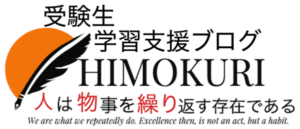wouldとused to どちらも過去の習慣「よく〜したものだった」と訳されます。
しかし、場面ごとに使い分けられています。今回は、wouldとused toの違いについてくわしく解説します。また、入試に頻出のbe used to ~ingや be used to Vについても解説します。
最後には理解ができたか?を確認するために演習問題が用意されているので、最後までしっかり読んで、マスターしてください。
wouldについて

「would」 は「過去の期間限定の習慣」に用います。「used to」と同じ意味と考えますが、「would」は現在と過去の対比を含みません。
「今でも〇〇はできるけれど、 昔のほうが回数が多かった 。」
そして、時・期間・頻度を表すフレーズを伴います。(often / when I was youngなど)で、“often” と一緒に使われることが多く、「よく〜したものだ。」という動作を表します。
”would” で「以前は〜だった」「かつて〜には〇〇があった。」「かつて〜に住んでいた。」などという状態を表す動詞「あった、いた、なった」(進行形にできない動詞)と結びつきません。
- I would play in the garden whenever I went to my grandma’s house.
おばあちゃんの家に行くたびに庭で遊んだものだ - When I was young, I would sleep in on Sunday mornings.
若い頃、毎週日曜の朝は遅くまで寝ていたものだ - We would often go to the movies on last summer weekends.
昨夏の週末はよく映画に行ったものだ
used toについて

「以前はよく〜した。(今はやっていない)」「以前は〜だった。(今はない)」のように【過去に習慣的に行っていたこと】や【長期的な過去の状態】を表すのが助動詞 “used to” です。
「今はもうしていない」「今はそうではない」と言わなくても、すぐわかるのが、”used to” の特徴です。
はっきりしていない不特定期間に使われます。具体的な期間には使われません。
used toは助動詞なので後ろには動詞の原形が入ります。
- I used to play baseball when I was a child.
子供の頃はよく野球をしたものだった・ - I used to live in China but moved to Tokyo last year.
前は中国に住んでいたけど、去年、東京に引っ越しました - I didn’t use to like tomatoes.
昔はトマトは好きじゃなかった
さらに、助動詞ued toですが、入試ではbe used to Vingとbe used to Vの形が頻出されます。何が違うのか次節で詳しく述べていきます。
混同しやすいのできちんと理解していきましょう。
be used to~ingとbe used toの区別について
be used to ~ingは「〜に慣れている」という意味です。このtoは不定詞のtoではなく前置詞のtoなので後ろに動名詞がこなければなりません。
なお、be動詞はgetに置き換えることができ、「〜に慣れた」というアクションになります。また、過去形はそのままgetを過去形gotにするかbe動詞を過去形にすることができます。
例文としては
- Ken is used to getting up early in the morning.(訳:ケンは早起きに慣れています。(現在))
- Ken gets used to getting up early in the morning.(訳:ケンは早起きに慣れます。(現在))
- Ken got used to getting up early in the morning.(訳:ケンは早起きに慣れた。(過去))
疑問文は
- Is Ken used to getting up early in the morning?(訳:ケンは早起きに慣れていますか。)
- DoesKen get used to getting up early in the morning?(訳:ケンは早起きに慣れますか?)
否定文は
Ken is not used to getting up early in the morning.(訳:ケンは早起きに慣れていません。)

さらに、be used to Vという形があります。
は、受動態であるbe usedとto不定詞の副詞的用法を組み合わせたものです。訳としては「~するために使われる」という意味になります。

wouldとused toの3つの違い

“used to” と “would” はどちらも過去の習慣を表す表現で、日本語では「よく~したものだ」と訳されます。両方とも昔(以前)を表している点では同じです。
注目する時間軸
「used to」は「今では成り立たなくなった過去の事実」を表わし、話の軸が【今】にあります。
「would」は「話者が個人的に過去を思い出す」という意味合いが強くなり、話の軸が【過去】にあります。
後に続く動詞の違い
「used to」は口語で、動作を表す動詞・状態を表す動詞に用いられます。
一方で、「would」は堅い文語で用いられることが多くです。wouldは動作を表す動詞に用いられますが、状態を表す動詞(進行形に変形ができない動詞)に用いられません。
用法の違いは、used toは「今はもうそれをしていない」ことに使います。
used toは、はっきりしていない不特定期間に使われます。具体的な期間には使われません。
対して、wouldは「今現在のこと」との関係がない場合に使います。wouldは過去を表す副詞、副詞句、副詞節と用います。
それでは、以上のことを踏まえて演習問題をしてみましょう。
演習問題

1.次の空欄に適切な語句を入れなさい。
(1).I often play the piano when I was childhood.
「私は小さい頃に、よくピアノを弾いていたものだ。」
後ろにoftenがあります。
(2).There be a supermarket here.
「以前、ここにスーパーがあった」
状況を表しています
(3).I often go to the movies when I was young.
「若いころはよく映画を見に行ったものだ」
時を表す副詞節があります。
(4).I ___ play basketball when I attended junior high school.
「中学時代によくバスケをした」
(5).I go to the movies but I don’t go there now.
「昔はよく映画館に行ったものだが、今は行っていない。」
(6).I go swimming on weekends.
「私は週末には泳ぎに行ったものだ」
on weekends が時を表します
(7).He ___________ cold weather.
「彼は寒さに慣れている。」
is used to「慣れている」別の表現としてbe accustomed toがある。
= He is accustomed to cold weather.
(8).I _________ make an origami crane with my grandfather, whenever I visited his house.
「私は祖父の家に訪れるたびに、折り鶴を一緒に作ったものだ」
whenever の副詞節があります。
2.カッコの動詞を適切な形にしなさい。
(1)He is used to ( get ) up early.
訳:彼は早起きに慣れている。
(2).This watch is used to (wake) up early.
訳:この時計は早起きするために使われる。不定詞副詞的用法と受動態の文です。文脈から判断する必要があります。
まとめ
いかがでしたでしょうか?
似た語句・表現の使い分けは、英文を作るには重要です。
used to, would両方とも「過去の習慣」を表します。用法の違いですが、used toは「今はもうそれをしていない」ことに使い、もうやめた習慣を表現することが多いです。
wouldは「今現在のこと」との関係がない場合に使い、昔によく行ったこと(動作)を懐かしむ表現が多く、状態を表すのには使いません。
皆さんの経験を伝えるためにも「used to」と「would」使い分けて、勉強を楽しんでください!
より詳しい文法の本として「英文法の鬼100則」を参考にされると良いでしょう。この本は、「『英語職人』時吉秀弥の英文法 最終回答!」というブログをまとめたもので文法をかなりわかりやすく説明しています。





コメント